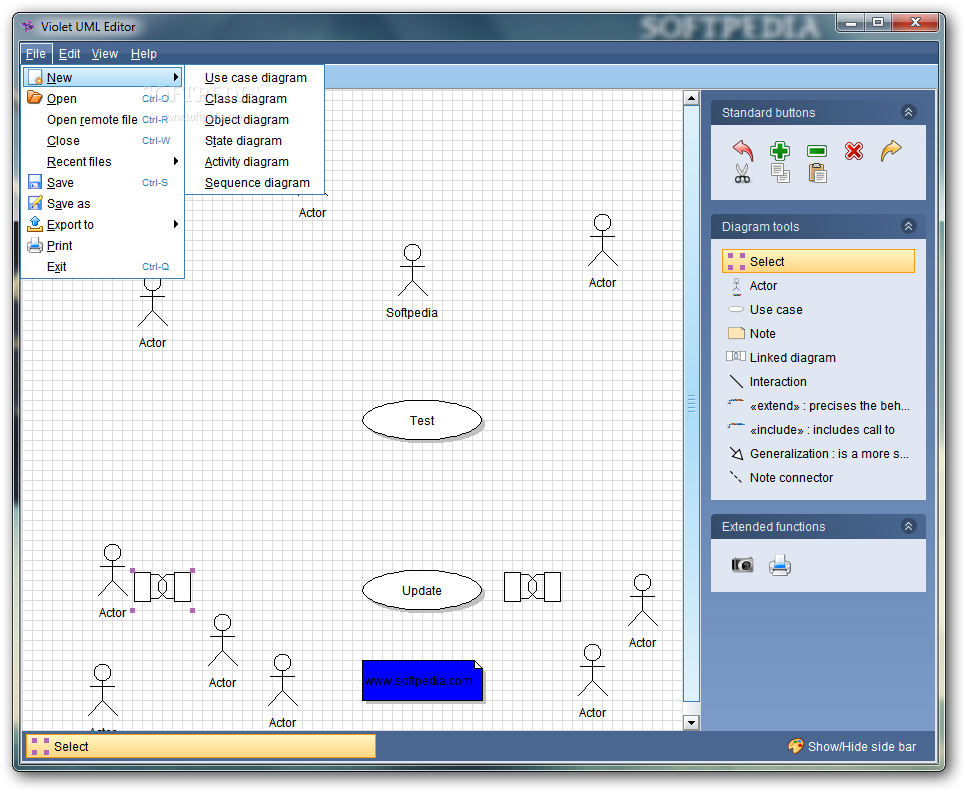

Behavioural diagrams are dynamic and consider processes and how the system functions over time. Within the UML 2.0 specification there are 6 structure diagrams: class, component, composite structure, deployment, object, and package. Structure diagrams are static and consider the relationship between the structural components of the system, without considering the system's behaviour over time. UML diagrams can be assigned to two broad categories: structure diagrams and behavioural diagrams.

Finally, the use of Violet to create each of the four emphasised diagram types (use-case, state, class and sequence) is detailed in four respective sections. Following on from this, instructions on the general use of Violet UML are provided. First, the range of available UML diagram types is outlined and the four UML diagram types covered within this tutorial are emphasised. The structure of the document is as follows. Should you wish to use an alternative tool with which you are more familiar (e.g. If you wish to use Violet within Eclipse, on your own computer, simply place it in your. The tool is available for download on SourceForge (size ~2meg).
MAKING A STATIC METHOD IN VIOLET UML EDITOR HOW TO
This tutorial will explain how to download and use Violet UML as a stand-alone application. Violet UML can function independently as a stand-alone application or as a plug-in for the Eclipse IDE (Eclipse is a cross-platform, open source, integrated development environment). Violet UML is an open source UML tool that enables the easy creation of simple UML diagrams.

The purpose of this tutorial is to guide users in creating UML diagrams with Violet UML. COMM005 - Information Systems Development - Violet UML Tutorial COMM005 - Information Systems Development - Violet UML Tutorial


 0 kommentar(er)
0 kommentar(er)
